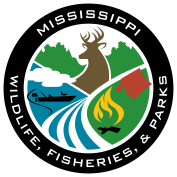
General Wildlife Management Myths
- Prescribed burning in the spring and summer is bad for wildlife.
False. When done strategically, growing-season burns (spring/summer) mimic natural fire regimes and improve habitat structure for many species by encouraging diverse plant regrowth more favorable to many wildlife game species and more effectively setting back vegetation succession through increased woody encroachment control. This also increases burning opportunities throughout the year, when the number of burn days in wetter Southern climates are more limited. Proper timing and scale are key to maximizing habitat benefits from growing-season fires. - Mowing clover helps it grow better and makes it more attractive for wildlife.
False. New research has shown that mowing clover will reduce overall quality and quantity of forage, reduces deer usage, and increases the Summertime stress to the plants, compared to non-mowed clover plots. - Putting alligators in ponds helps control beavers.
False. Alligators are not effective beaver predators and rarely target them. - Properties with lots of oak trees are the best wildlife habitat.
False. Oaks are valuable for mast (acorns), but diverse structure and plant types — including grasses, forbs, shrubs, and edge — are critical. A forest of only mature oaks lacks quality nesting, brood, and cover habitat for many species. - Using feeders helps wildlife.
Misleading. Feeders can supplement wildlife diets in extreme situations, but in general there are more negative aspects of using feeders for wildlife management than positives. Feeders concentrate animals which can increase the spread of diseases and increase predator exposure. Supplementing nutrition with feeders is also less cost-effective than other wildlife management techniques. If using corn as a supplemental feed in Southern states, this can also negatively influence deer movements for hunters by causing deer to move less often, bed down more, move shorter distances, and feed more at night. Natural forage from diverse native vegetation is much more beneficial. - If the habitat is green, it’s good habitat.
False. Green doesn't mean it's useful. Invasive or non-native plants may dominate "green" areas but provide little to no food or cover for native wildlife. Shade-tolerant plants are also often not very valuable to wildlife.
Deer Management Myths
- I can’t have good deer because there are ‘bad genetics’ in my area.
False. Genetics are never the limiting factor. Nutrition and age structure (letting bucks mature) have a much greater impact on antler development and herd health. - Once a spike, always a spike.
False. Mos spikes are 1-year-old young bucks. Many spike bucks grow large antlers if allowed to mature. - A fawn found alone has been abandoned or its mother must have died.
False. It's normal for fawns to be left alone while the doe feeds. This increases their chances of survival since fawns are harder for predators to see, can lower their heartrate, and have little scent, compared to the mother doe. Intervention is rarely needed unless the fawn is obviously injured or in danger. - More does equals more bucks.
False. A skewed sex ratio with too many does can reduce rut activity and buck movement. A balanced herd leads to a healthier population and better hunting conditions. - Mineral blocks are needed to grow big antlers.
False. While minerals support general health, research has shown that most deer forage plants have enough minerals to maximize a deer’s needs. Protein-rich forage and allowing bucks to reach maturity have much greater effects on antler size. Minerals alone won’t make a big difference. - Food plots provide all the food deer need to maximize their health.
False. Although food plots can supplemental in providing high-protein forage for the herbaceous portion of a deer’s diet, they are not replacements for native vegetation. Diverse natural woody browse which provide for 50–70% of a deer’s diet is the foundation of deer health, and cannot be planted in a food plots.
Waterfowl Management Myths
- Ducks harvested on opening day are ‘local birds’.
Sometimes false. While some early-season birds may be local, waterfowl that migrate still make up a large portion of the birds that are harvested early. Banding data has shown that even early ducks can come from far north. - Most ducks show up after waterfowl season is over.
Mostly false. Migration timing varies with weather. However, waterfowl surveys have shown that numbers remain consistent after the season, but they are often more concentrated in areas with remaining water as many waterfowl impounds become drained.
Quail Management Myths
- You can get a quail population started on your land by putting out pen-raised birds.
False. Pen-raised quail have very low survival rates due to a lack of wild instincts. Only habitat restoration has been shown to support sustainable quail numbers, by increasing local populations. - Fire ants caused the quail population decline.
False. Habitat loss and degradation (lack of nesting/brood cover) are the primary reasons for quail declines across the Southeast.
Turkey Management Myths
- Predators are the main reason for turkey number declines.
False. Predators may play a role, but poor nesting and brood-rearing habitat are the leading causes of declines. Habitat management (especially early successional cover) is more effective than predator control alone. - More mature gobblers means more successful turkey reproduction.
False. It only takes a few mature gobblers to breed many hens. Hen survival and poult recruitment, driven by habitat quality, are much more important to turkey populations. - The best habitat for optimum turkey populations are mature timber forests.
False. While turkeys use mature timber where they can scratch around, are able to see predators a long way, they need a mosaic of habitats that include open areas and early successional vegetation for nesting and brood-rearing for turkey populations to thrive.
For information about wildlife management visit